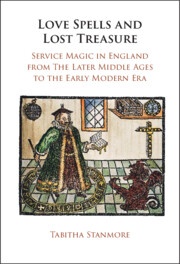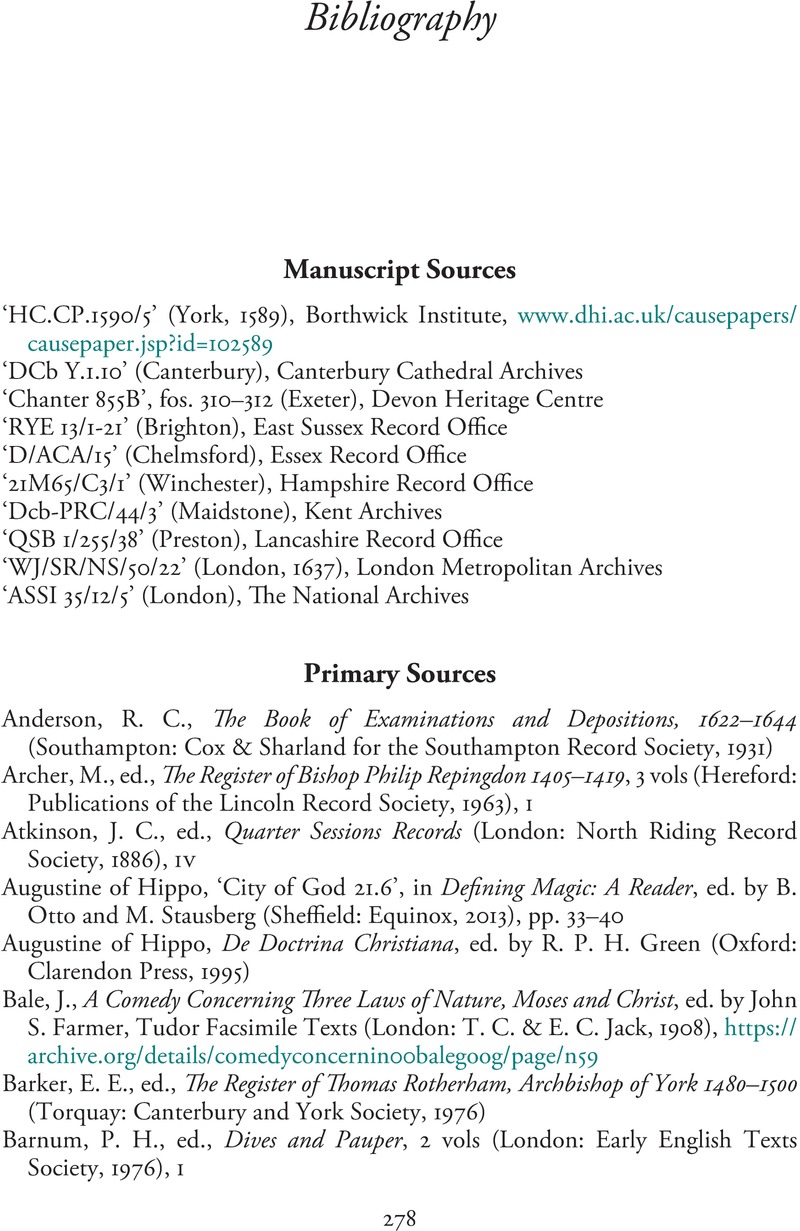 Love Spells and Lost Treasure
Love Spells and Lost Treasure Book contents
Bibliography
Published online by Cambridge University Press: 06 January 2023
Summary

- Type
- Chapter
- Information
- Love Spells and Lost TreasureService Magic in England from the Later Middle Ages to the Early Modern Era, pp. 278 - 298Publisher: Cambridge University PressPrint publication year: 2022


